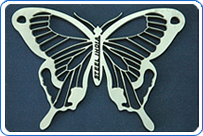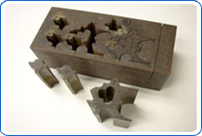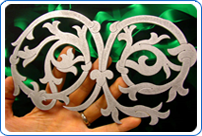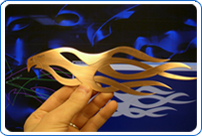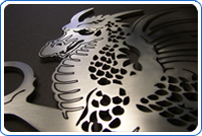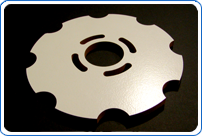Designs Gallery made by Waterjet Cutting
Architect Samples |
|||
Engineering |
|||
Metal |
|||
Ceramics |
||
| Ceramics are made by heating up minerals to a high temperature. Traditionally, ceramics have been made from clay, but modern ceramics are made from substances such as alumina and from synthetic materials. Ceramics are electrical insulators and resist corrosion. | 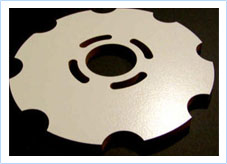 |
|
Composites |
||
| Composites are similar to fiberglass and consist of layers of material. Abrasivejets can machine composites without leaving a burr or shredding the layers of material and, while maintaining a better edge quality. | ||
Rubber |
||
| Water-only waterjet nozzles cut rubber faster and cleaner, though some very hard rubbers may require abrasive. Water-only cutting wastes little material, is quieter and increases the nozzle life. Water-only cutting also proceeds very quickly at speeds of 100 inches per minute or faster. |  |
|
Exotic Alloys |
||
| It's hard to beat a simple jigsaw, but some precision abrasivejet systems are being used to cut wood, typically for special intricate shapes and only after delivering a return on investment via metal parts production. | 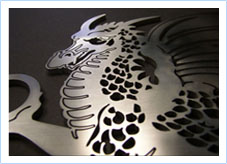 |
|
Stone |
||
| Stone is difficult to machine conventionally, but very intricate shapes can be cut with a precision abrasivejet using low-pressure pierce capability. Many machine shops purchase an abrasivejet system for producing engineered components and then find that they can also create a good market in relatively expensive custom stone and marble applications such as inlaid flooring. | 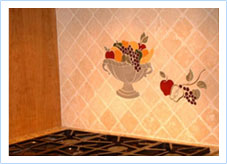 |
|
Glass |
||
| Glass is a unique substance that was traditionally been difficult to machine. Although it has a great deal of structural strength, even small scratches on the surface can lead to breaking and shearing. In fact, the traditional method of "cutting" glass involves making a small scratch on the surface with a diamond file and then applying pressure until it breaks along the scratch. | 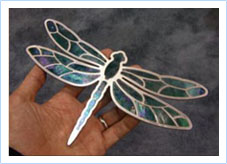 |
|
Wood |
||
| It's hard to beat a simple jigsaw, but some precision abrasivejet systems are being used to cut wood, typically for special intricate shapes and only after delivering a return on investment via metal parts production. | 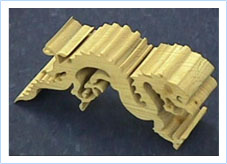 |
|
